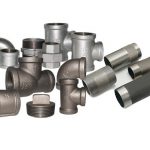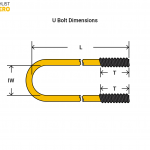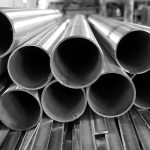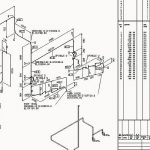A piping system is the assembly of instruments, valves, fittings, and pipes that allow for the transfer of fluid or gas from one location to another. The pipe itself is the backbone of this system. In this article, you will learn about pipe construction methods, pipe materials, and how pipes are specified.
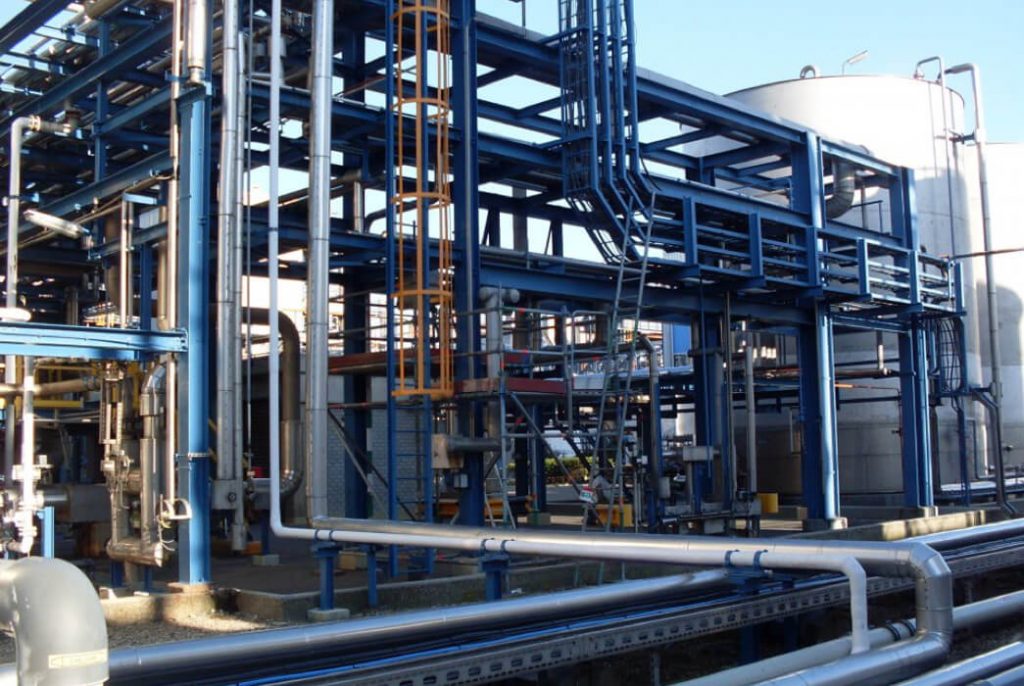
Construction Method
Pipes come in a variety of sizes, types, and material grades. The two basic construction methods for pipe are seamless and welded.
Seamless Construction
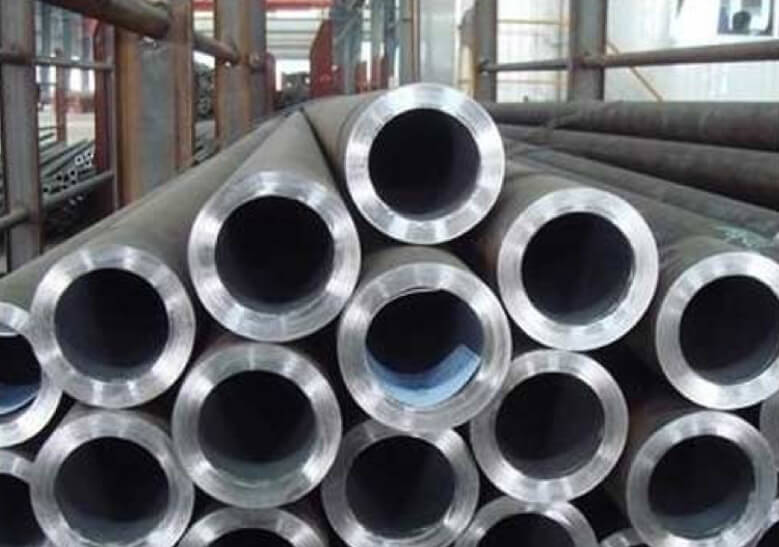
Seamless pipes begin with a solid cylindrical piece of steel called a billet. The billet is heated and pierced through its center with a mandrel. The next process is rolling and stretching the billet to its desired length, diameter and wall thickness.
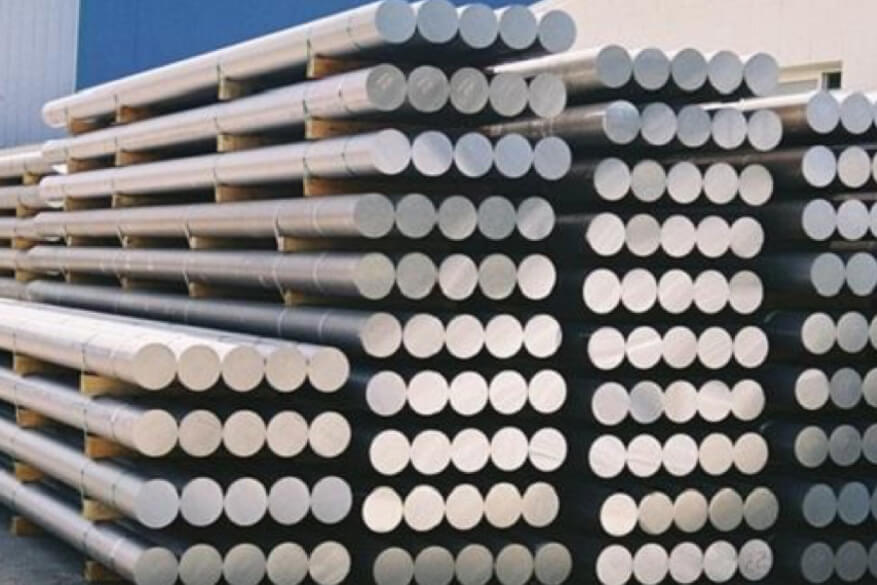
Seamless pipes are capable of withstanding extreme temperature and pressure. They are often used in gas lines, high-pressure processes in refineries, hydrocarbon industries, and oil and Gas infrastructures. Due to their absence of joints and welding points, durability and internal erosion resistance is high. Seamless pipes are common in small diameters but become less economically viable as size increases.
Welded Pipes
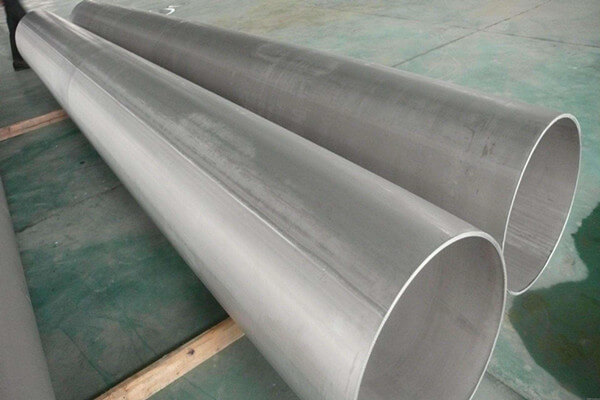
Welded pipes start out as a coiled ribbon of steel called “skelp”. The skelp is cut to its desired length and becomes a flat rectangular sheet. The rectangular sheets are machine rolled, thus curling the longer sides up towards the other and forming a cylinder. An electric resistance welding process (ERW) melts the cylinder’s edges and fuses them together. Welded pipes may be heat treated post-manufacture to reduce stress concentrations.
A welded seam pipe undergoes various testing to ensure its durability, resistivity to stress, and its external appearance. Weld seam inspection is performed using non-destructive testing (NDT) techniques.
These pipes are cost-efficient to manufacture. In addition, because they came from a single ribbon of steel, their wall thickness is more consistent than seamless pipes. Welded seam pipes are less expensive to produce than seamless pipe, particularly in larger diameters.
Piping Materials
Every piping material has its advantages and disadvantages. When choosing a material, the following considerations apply:
- The pipe must correspond to the process media it carries;
- It must be in compliant with applicable government and project specifications;
- It must be economically viable
The following are widely used industrial piping materials: carbon steel, stainless steel, and plastic.
Carbon Steel Pipe
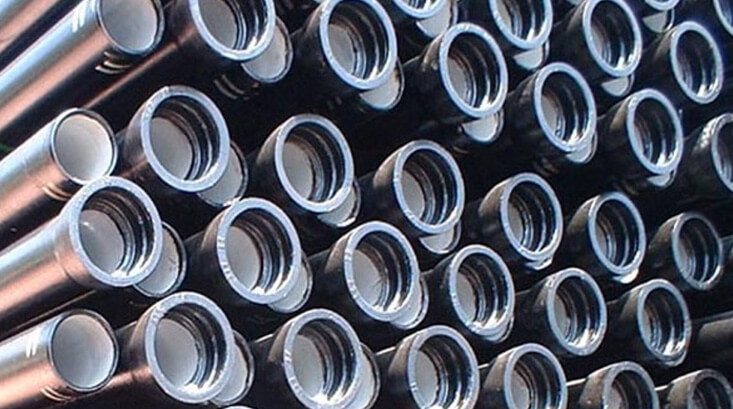
Carbon steel pipe is made from a steel alloy with iron and carbon. Carbon steel pipe is known for its durability and capability to withstand stress and environmental conditions. It is the ideal material for structural applications and is the most commonly used pipe in industrial applications.
Carbon steel provides durability against stress, fatigue, and breakage concerns. It is compatible with a wide variety of process media, making it a strong choice for most projects. A standard corrosion allowance of 1/16″ is used unless the project requires a higher limit. The base materials of carbon steel are much affordable than stainless steel and alloy. Carbon steel pipe is recyclable, thus making it environmentally friendly.
Due to its material composition, even a thin carbon steel tube is heavy. This limits its utility when weight and flexibility is a concern. Carbon steel corrodes easily in a salt-laden environment, whether near the coast or offshore.
Stainless Steel Pipe
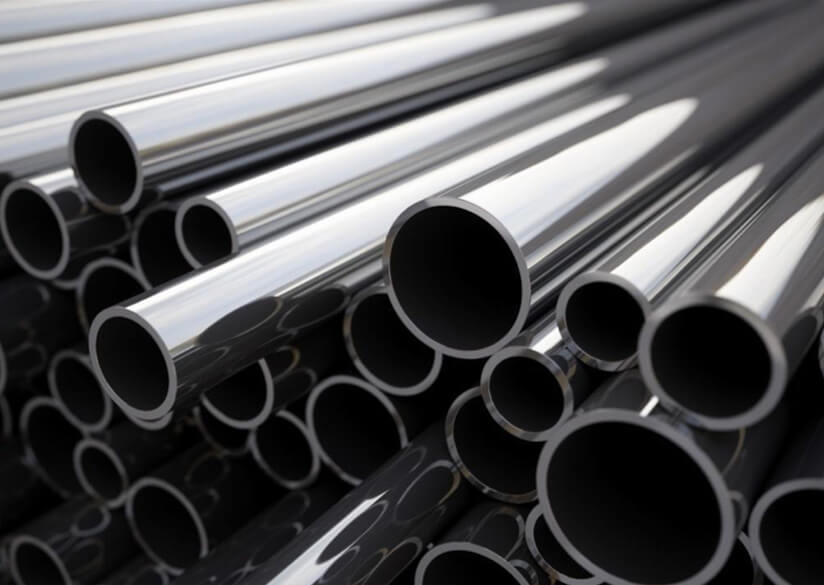
Stainless steel is an alloy that uses a percentage of chromium, giving it an ability to resist corrosion. This material is common in offshore sites, sanitary applications, aircraft, and the medical industry. It also has a high-pressure point, making it useful in the manufacturing industry.
The addition of chromium makes stainless steel highly resistant to corrosion and oxidation. Stainless steel is considered subject to corrosion, and as such, stainless steel’s corrosion allowance is considered 0. This material is highly resistant to impact, high pressure, and structural damage. One of the reasons stainless steel pipes are widely used in the sanitary and medical industry is its high compatibility with various chemicals.
Stainless steel pipe is significantly more expensive than carbon steel piping and is prone to dirt, dust, and smudging. Cross-contamination with carbon material is common if handled improperly. Stainless steel is also a difficult material to cut and shape which may result in additional fabrication time.
Plastic Piping
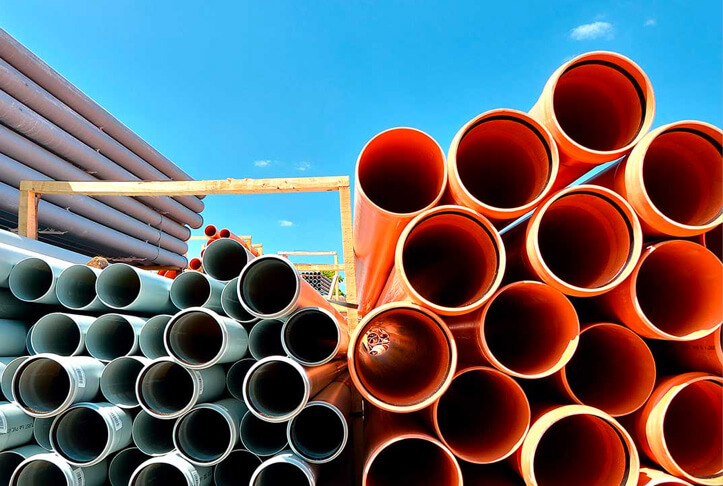
For niche industrial applications, plastic piping may be a good choice. Plastic piping covers a broad range of plastics, from polyvinyl chloride (PVC), high-density polyethylene (HDPE), and polypropylene (PP).
Plastic pipes often have low-cost components and it is simple to install. They can withstand corrosion after long exposure to fluids and chemicals. The ease of cutting and joining plastic pipe make changes easy.
Components and variations of plastic pipes are readily available in the market. Oftentimes, plastic pipes are marked with their diameter, pressure rating, type of plastic and can be distinguished by color.
At higher temperatures, the strength of plastic pipes drastically reduces. The pipe may become brittle and susceptible to cracking. Plastic pipes do not have fire-resistant properties.
Alumininum Pipes
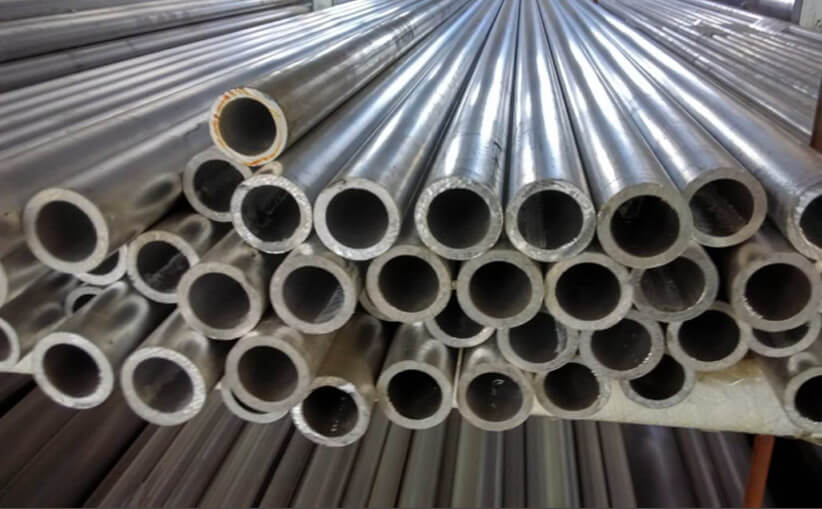
Aluminum pipes are a versatile combination of flexibility and durability despite being one-third of the weight of steel pipes. They are also a viable option for marine applications, solar and renewable energy, and compressed air systems.
Aluminum’s light weight makes installation and modification easier and cost-efficient. It is highly heat-tolerant, ensuring minimal expansion due to temperature increases. Aluminum is 100% recyclable, has anti-corrosive properties, and its smooth internal surface can reduce pressure drop making it optimal for airflow systems.
Aluminum material is more expensive than steel, and its overall strength makes it a sub-optimal fit for demanding service.
Copper Pipes
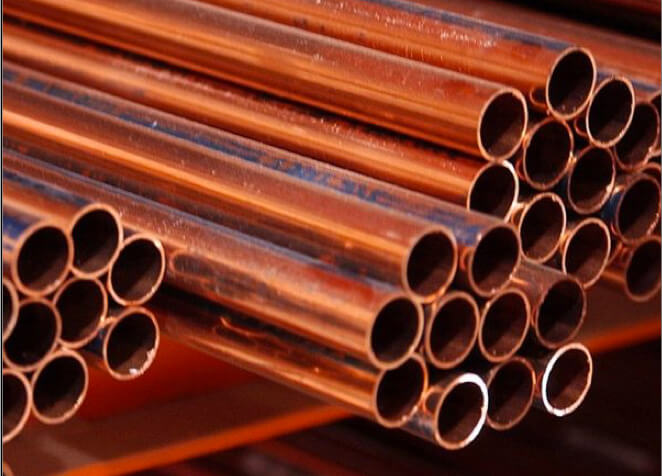
Copper pipe is a durable metal, lightweight, and able to span long distances without support. Because of these qualities, it is commonly applied in mechanical equipment, plumbing, and conveyance of potable water.
Copper pipes are particularly useful for hot water supply systems, although it may require insulation for proper performance. When water freezes in a copper pipe, the pipe does not crack or burst. Copper has naturally anti-corrosive properties ensuring that the pipes can last a long time.
The pipe itself is expensive and the installation process demands a professional’s precise weld which adds to the total cost of installation.
Exotic Materials
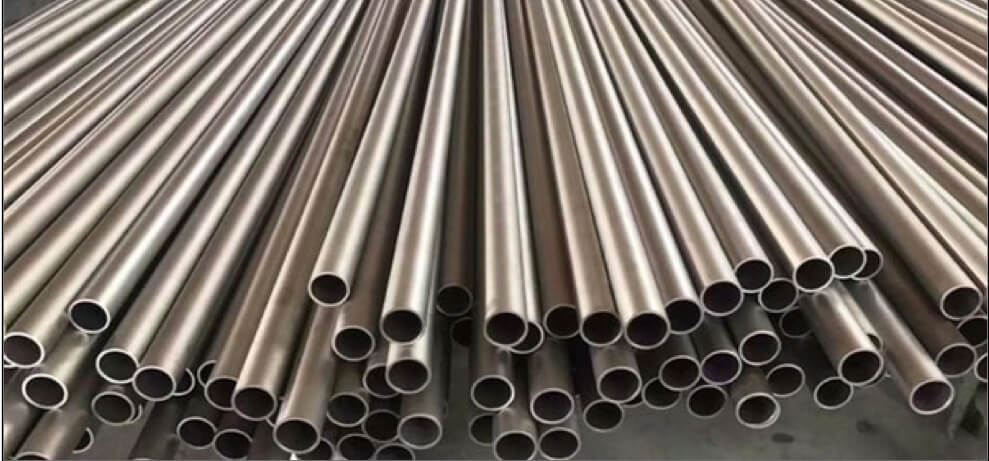
Exotic material in the piping industry typically refers to titanium or Inconel construction, but may also include specially designed alloys outside of the steel, plastic, aluminum, and copper groupings previously discussed.
Titanium is a unique material that has a natural resistance against chemicals, rust, and corrosion. It is also among the strongest and most durable metals on earth which is why it is mainly used in aircraft or naval vessels and even spaceships. It can withstand extreme heat ranging up to 600° Celsius because of its thermal conductivity.
Although titanium has the highest strength-to-density ratio on any metallic element, it has drawbacks. Due to its strength, it cannot be cast easily and is far more expensive than other pipe materials.
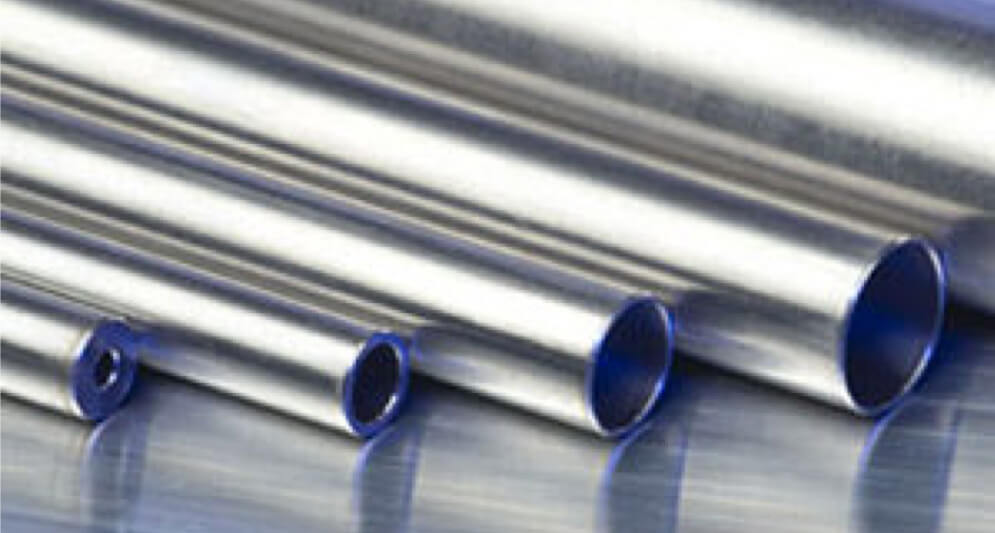
Inconel is predominantly composed of nickel and chromium and is highly resistant to oxidation and corrosion. Because of these properties, these pipes are mainly used in extreme environments. Examples include, but are not limited to: steam generators in nuclear-pressurized water reactors, cryogenic systems, rocket engines, and severe chemical processing applications.
Inconel is difficult to weld, shape, and machine. Its high price makes it impractical for all but the most demanding applications.
Specifying a Pipe
Once a compatible material with the target media is chosen, the proper nominal diameter and pipe size can be determined. Typically this process begins with fixing an expected fluid velocity. The pressure drop for that expected velocity over a pipe run is calculated and may not exceed a certain number.
One contributor to pressure drop is friction between the pipe and fluid. Pressure drop also occurs when there is a change in elevation of the fluid (e.g. the pipe is not horizontal) and as it passes through the pipe components such as fittings, bends, valves, and instruments.
Pipe Diameter
This “not to exceed” pressure drop allows for a selection of nominal diameter. Pipes are specified by “Nominal Pipe Size” (herein referred to as “NPS”). The American National Standards Institute (ANSI) established the NPS standard. The metric equivalent is DN or “diameter nominal”.
The table below shows corresponding values for NPS and DN:
| DN (mm) | NPS (in.) | OD (in. (mm)) |
| 6 | ⅛ | 0.405 (10.29) |
| 8 | ¼ | 0.540 (13.72) |
| 10 | ⅜ | 0.675 (17.15) |
| 15 | ½ | 0.840 (21.34) |
| 20 | ¾ | 1.050 (26.67) |
| 25 | 1 | 1.315 (33.40) |
| 32 | 1¼ | 1.660 (42.16) |
| 40 | 1½ | 1.900 (48.26) |
| 50 | 2 | 2.375 (60.33) |
| 65 | 2½ | 2.875 (73.02) |
| 80 | 3 | 3.500 (88.90) |
| 100 | 4 | 4.500 (114.30) |
| 150 | 6 | 6.625 (168.27) |
| 200 | 8 | 8.625 (219.08) |
| 250 | 10 | 10.75 (273.05) |
The pipe’s nominal diameter is related to the pipe’s outer diameter but is not its exact measurement. For instance, a pipe with a nominal diameter of 0.5″ has an actual outer diameter of 0.84″.
Pipe Thickness
Pipe thickness is expressed in terms of schedules and available in numerous wall thicknesses. Thickness availability depends on the pipe’s material and diameter and is best chosen by consulting a pipe thickness chart.
Piping System
Determining the pipe material and pipe size is just one element of an overall piping system. Fittings, instruments, valves, installation methodology, and support schema are just a few of the other elements involved in designing, fabricating, and installing a piping system.
